The ‘Search’ facility is possibly my most used feature in Adobe Lightroom. It is my usual starting point for finding pictures to illustrate a new feature article. The search tool opens up your catalogue and responds quickly to any category of data needed, either derived from EXIF embedded in metadata, or personal keywording. I guess most readers are familiar with this feature and use it from time to time.
A few months ago, I was looking for illustrations for an article on ‘Photography in Winter’ for the Leica Fellowship quarterly newsletter. Hence my search was for pictures not only keyed as ‘winter’ but for pictures taken with Leica cameras and/or Leica lenses. My catalogue also contains a lot of files derived from scanned films or prints and there is no easy way of determining their parentage, other than from attached keywords or tags, assuming they were attached.
Venerable
After selecting my shortlist of winter pictures, I was surprised to find the oldest were made with my venerable Leica Digilux 2. I was astonished by their quality and relevance despite, at the time of shooting, not understanding the advantages of capturing files in RAW format. It spawned an idea for this article.
Specification
The Digilux 2 was a joint production with Panasonic who sold a near-identical version called Panasonic DMC-LC1. By today’s standards, its 5 megapixels sensor will seem woefully inadequate. But we are talking about the year 2004, sixteen years ago, which is a long time in digital development.
Although promoted and regarded by many as a point-and-shoot camera, it was very much more than that. It was used by professionals for press and illustrative work. In my case, it was to meet changing editorial requirements at that time that I bought my Digilux 2. Apart from the DMR (or Digital Module for Leica R 8/9 cameras), the Digilux 2 was as far upmarket as Leica went in those days. The M8 was still on the drawing board.
The outstanding feature of the Digilux 2 is its lens, designed by Leica, and an outstanding performer. I had never owned a lens in its class, so good. It is a real shame that it now languishes on an out-of-date body and sees relatively little use.
In comparison, it is noteworthy that contemporary Leica R lenses have seen a rebirth as they enjoy being adapted for work on newer system bodies, such as the SL and CL. Not so with classic lenses permanently fixed to obsolete bodies. They quickly become museum pieces, more is the pity.
The Digilux 2 sports a 28-90 mm Vario-Summicron zoom lens with an almost constant starting aperture of f/2. (At the 90 mm zoom setting, the aperture closes slightly to f/2.4 — a very modest loss of light transmission). All of this was possible because the sensor was a tiny two-thirds inch CCD type, or about the size of a photographer’s little fingernail.
Unfortunately, the sensitivity of the sensor is rather limited, typical of the state of technology at that time. The base ISO is 100, with two additional settings of 200 and 400, unthinkable today, but typical of contemporary film speeds in 2003 when it was designed.
Performance at ISO 400 is quite noisy but, within reason, that is controllable with modern software. However, one cannot hide the fact that the camera’s use in low-light is very limited unless auxiliary sources are added or time exposures are possible. I often used it in the latter way.
Piece of history
I wonder how many readers are familiar with, or actually own a Digilux 2? A search of Macfilos archives revealed that our Editor discovered a near-mint Digilux 2 camera with accessories in 2013, some seven years ago, and gave an interesting account of this little piece of history. So I will not go into further technical details here. They have not changed.
However, I do have two original accessories: the black leather case with space for spare battery and memory card; and a Leica Elpro-D E69 close-up attachment for even closer subjects. That enabled me to shoot close details, for example, of tools and grain of fine furniture.
In 2018, contributor John Nicholson brought his Digilux 2 out of hibernation and took some attractive Spring pictures. So it is mainly for the benefit of younger members, or those readers who are only recent converts to Leica Lore, that I share my current experiences with the camera which I bought new in 2004, soon after it was launched.
From colour slides to digital files
For about fifteen years I had been illustrating my freelance articles with colour transparencies, mainly in medium format, but gradually including Leica M6 material. By 2004 I had a varied portfolio of work of which one sector blossomed. I was profiling and portraying craftspeople and their workshops all over the country, one even in Australia where a sheep farmer was a nationally known woodturner. Within this body of work, I featured over two hundred workshops (more on this later) and witnessed the rapid emergence of digital media. Soon I was pressed by an editor to deliver my contributions digitally. Initially I was sceptical whether the quality was good enough. However, very soon film photography was eclipsed by editorial preferences for digital media.
I surveyed the market, visited Focus on Imaging at the NEC in Birmingham and handled the new Leica Digilux 2 camera which had just been launched. Although the resolution was a little on the low side in comparison with other brands, I did like that lens. Soon after its launch, I had my own Digilux 2 together with its own leather case and UV filter to protect the lens in active workshops. Many of these places were very dusty, not ideal environments for changing camera lenses.
The changeover was daunting. I had to become competent in digital processing and quickly saw the need for some kind of DAM – or Digital Asset Management. DAM is a fairly complex subject and, understandably avoided by many photographers. Suffice to say that after one or two false starts, I welcomed Adobe’s launch of Lightroom. It was clearly superior to earlier software and continued to evolve over time. It meets all of my current needs, both for DAM and processing.
Into the Workshops
So the Digilux 2 quickly became the digital camera of choice for my illustrated articles, profiling a wide range of businesses. How did it perform?
Whereas with film cameras I carried portable studio lighting units into the workplace, I found, with care, that I could mostly cope using ambient lighting. That was very liberating and also yielded more natural photographs of my subjects. I found that I had finer control over colour fidelity and setting the white balance. Invariably I grew to depend on using a calibrated grey card to control unwanted colour contamination. Different coloured woods, for example, could be shown more accurately.
The Digilux 2 was mostly used on tripods; a table version for worktops and a conventional tripod for more general views and portraits of people at work. Some subjects were specialist colleges and schools while others included musical instrument makers, boat-builders, a coracle-maker, archers, cabinetmakers, bow-makers, oarsmen, tree-houses, cathedral furniture, replica sports car makers, church organ-makers, a smoking pipe-maker, Romany caravan restorers and woodturners. These represent a few of the many craftspeople I profiled in the Nineties and Noughties. Each workshop was different and posed challenges when intruding with photographic equipment.
Dust was a hazard to be avoided wherever possible. While some places were spotlessly clean with modern air filtration, others revealed the legacy of years of accumulated dust. It was a serious fire risk and naked flames were prohibited. In the latter cases, I always used a shroud to protect my camera and lenses between shots.
I found this chapter of my work most interesting and several of these subjects became my business features in The Times and professional media.
Personal portraiture
The Digilux 2 proved equally capable when I needed a camera for family pictures. Apart from informal portraits, it was the camera of choice when persuaded to photograph my nephew’s wedding. In church, its silent operation enabled me to shoot from quite close to the bride and groom.
I rarely use flash, nowadays. However, the Digilux 2 has a most ingenious inbuilt pop-up flash which I used to advantage when ambient light indoors was borderline. What is special about its flash is the ability to select a halfway position, which gives a brief burst at 45 degrees tilt, useful for bouncing light. With a make-shift reflector, the shady side of window light can be softened in a convincing way. A product picture also shows the Digilux 2 with flash set to the angled position.
Is the Digilux 2 still worth buying today?
I have often been asked this question by people worldwide who have seen my historical notes on my website. My advice varies and has naturally become more cautious over time. I will try and crystallise my thoughts on this question as follows.
- In terms of specification? Probably not.
- In terms of helping a young person learn about photography? Possibly. Its analogue controls help a beginner to appreciate the factors influencing how to take a successful picture.
- For a nostalgic experience with early Leica digital cameras? Certainly.
- For those at peace with a slower pace of life, yet who resist dabbling with cut-film in technical cameras and mixing chemical brews? Possibly.
- For those who believe what others claim, i.e. that the Digilux 2 produces photographs with a distinctive look? Many users think so. See this thread which has 2,900 contributions from users and inquirers worldwide.
What is not in doubt is the enduring performance of the earliest Leica digital cameras, epitomised by the Digilux 2, X1, X2 and X Vario. They are still fully capable of taking impressive photos, fully up to the standard established when first launched up to sixteen years ago. That is pretty good for modern electronic devices.
The main risks with the Digilux 2 are component failures. Leica no longer maintains spares for these obsolete digital cameras. That is why serious owners possess one or more spare bodies in case cannibalisation becomes necessary. But let us not dwell on the negatives. My Digilux 2 could certainly do with a new coat (or ‘skin’). But I like it as it is. It looks like and handles like many classic Leica cameras. That is a joy in itself and a good enough reason to own one.
Copyright © David Askham 2020

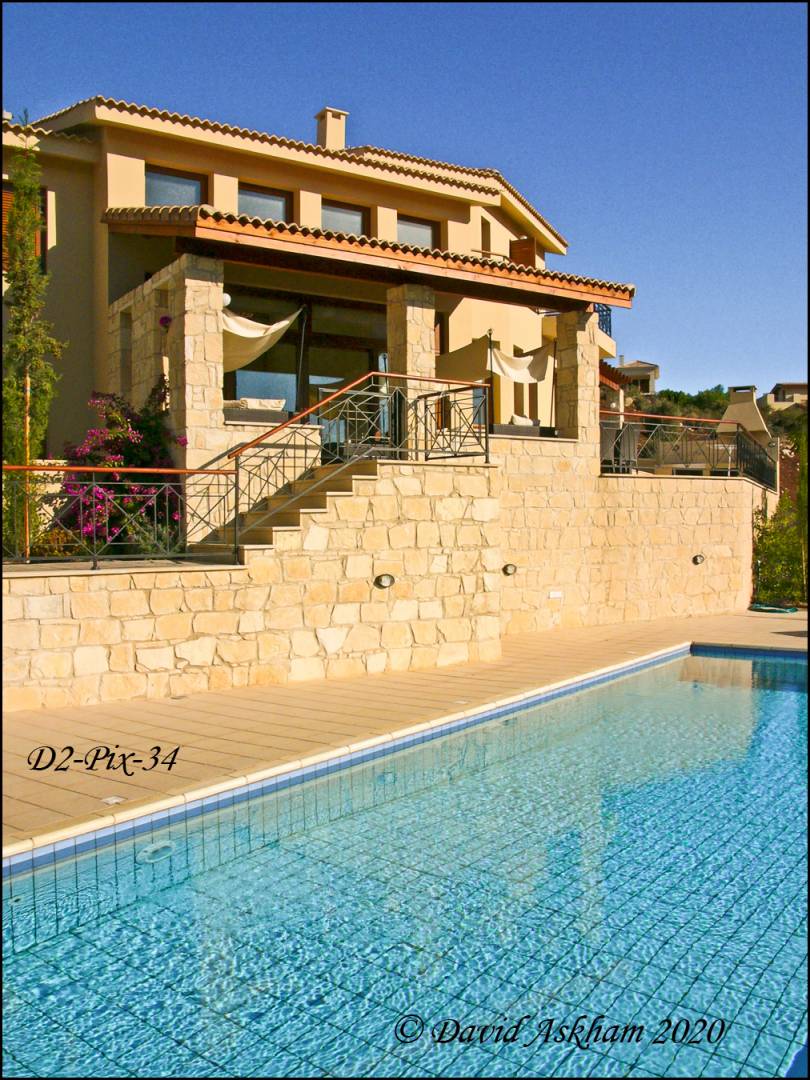

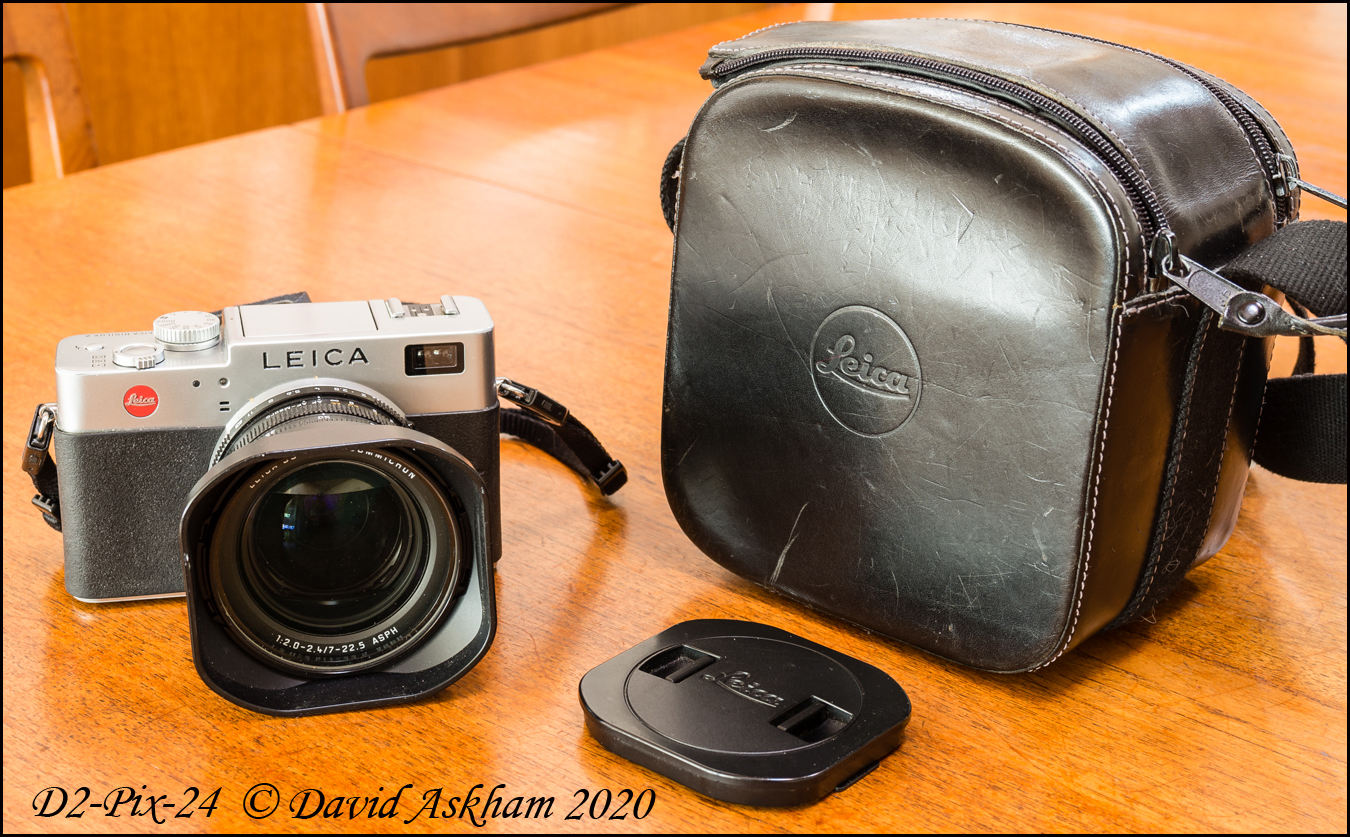
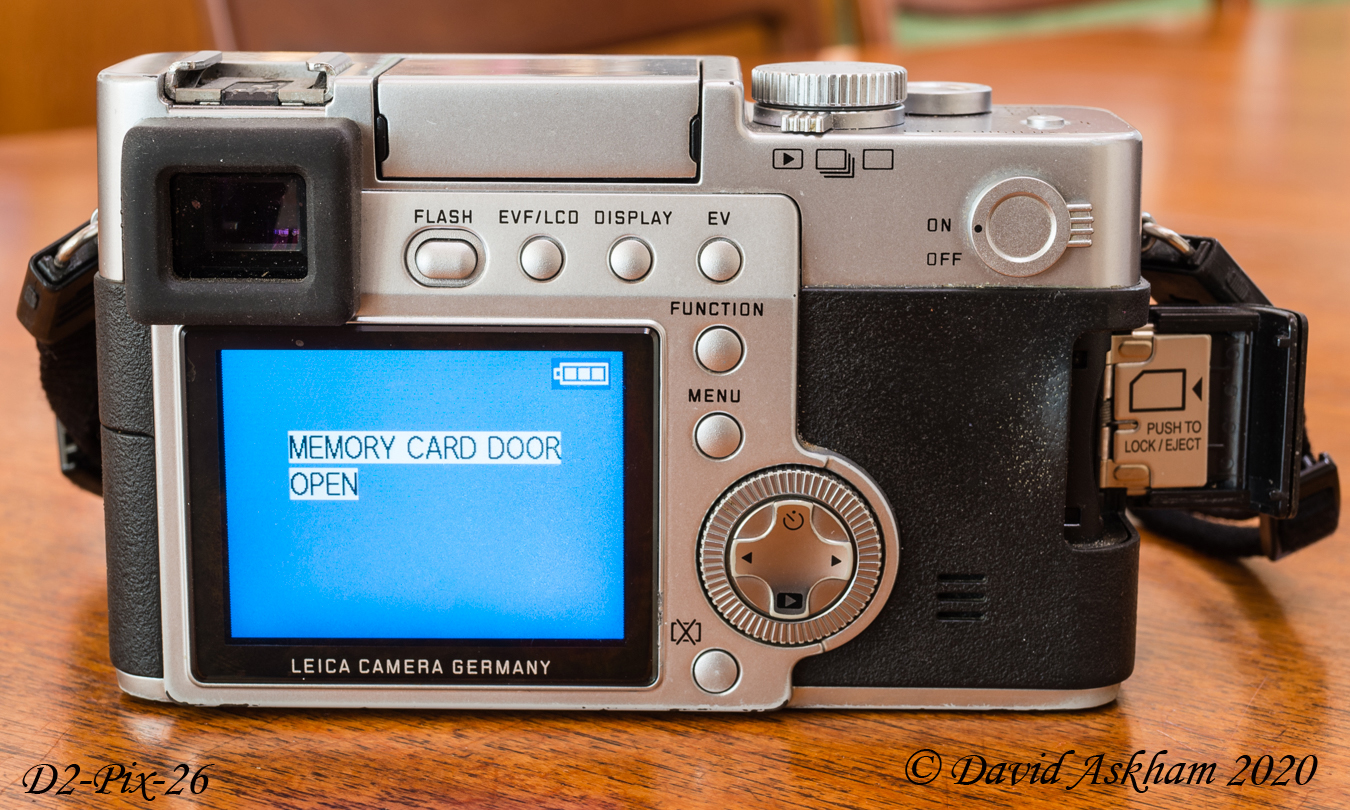

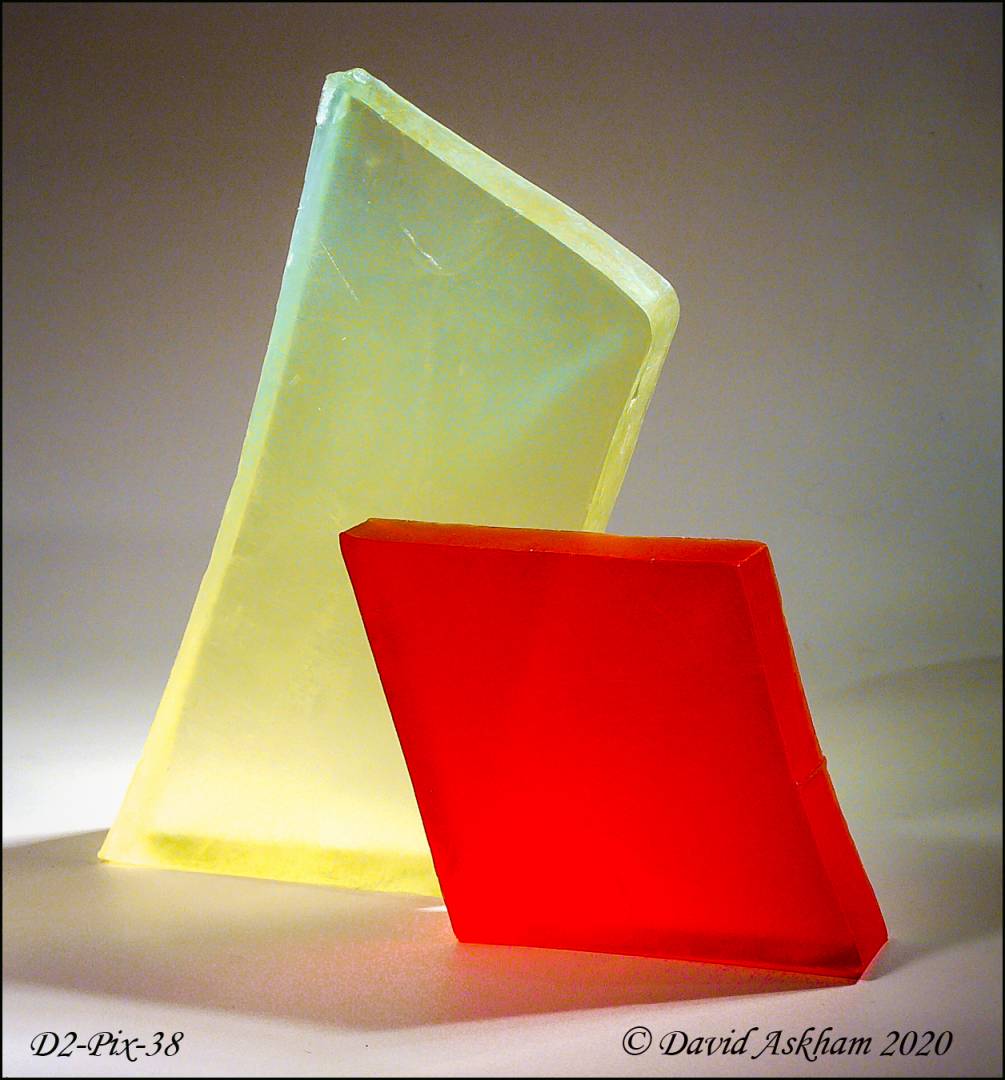

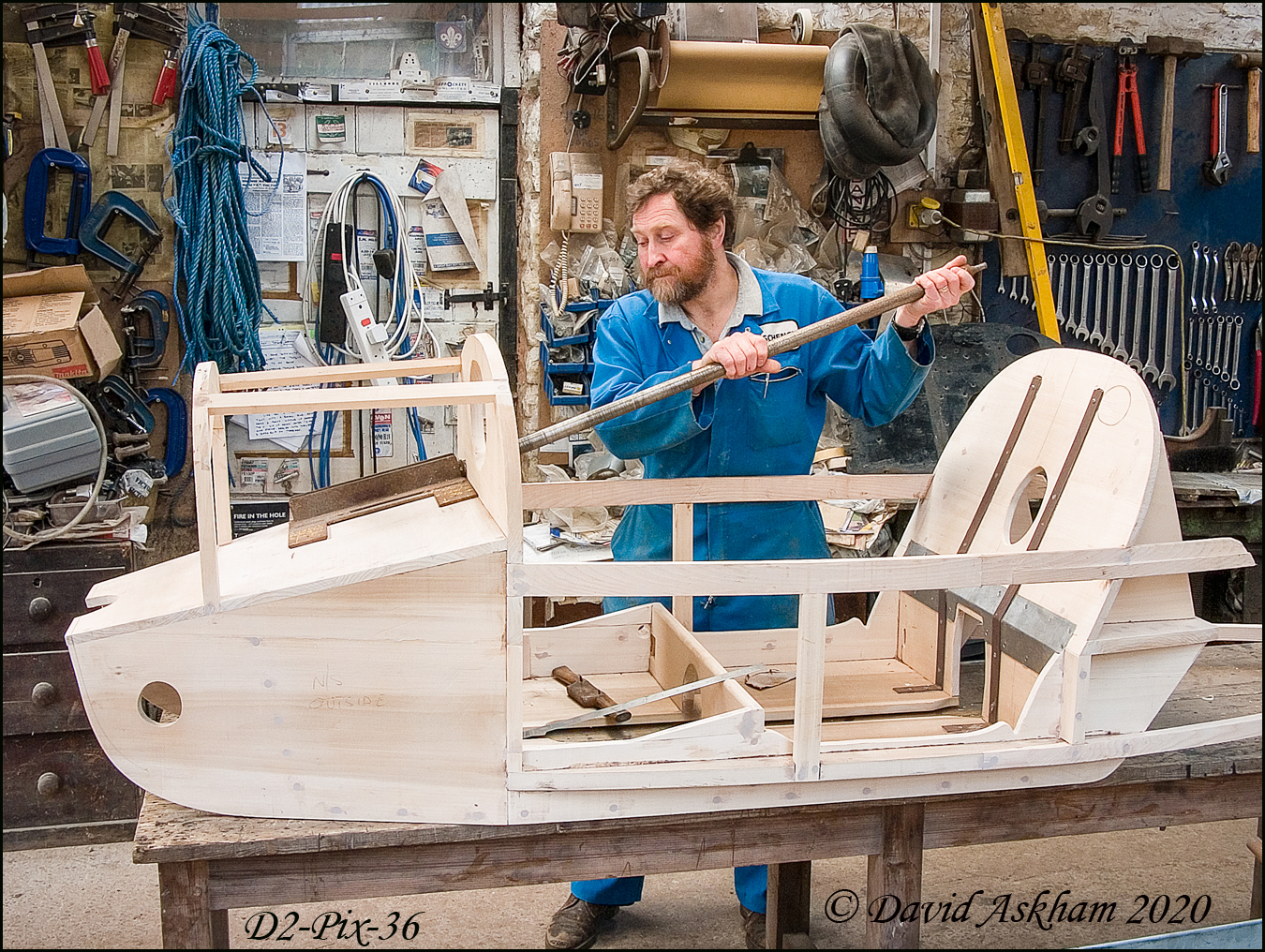
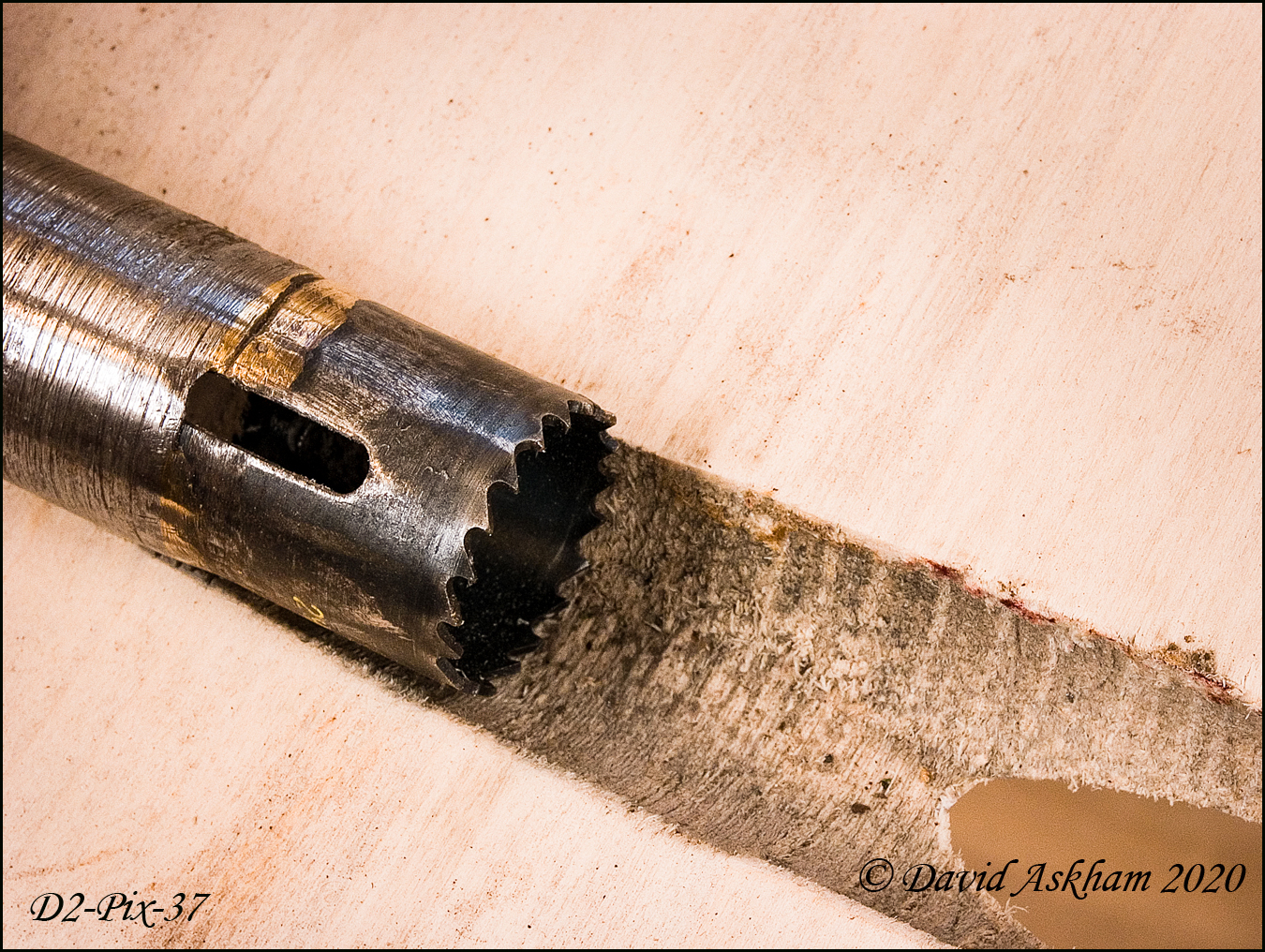
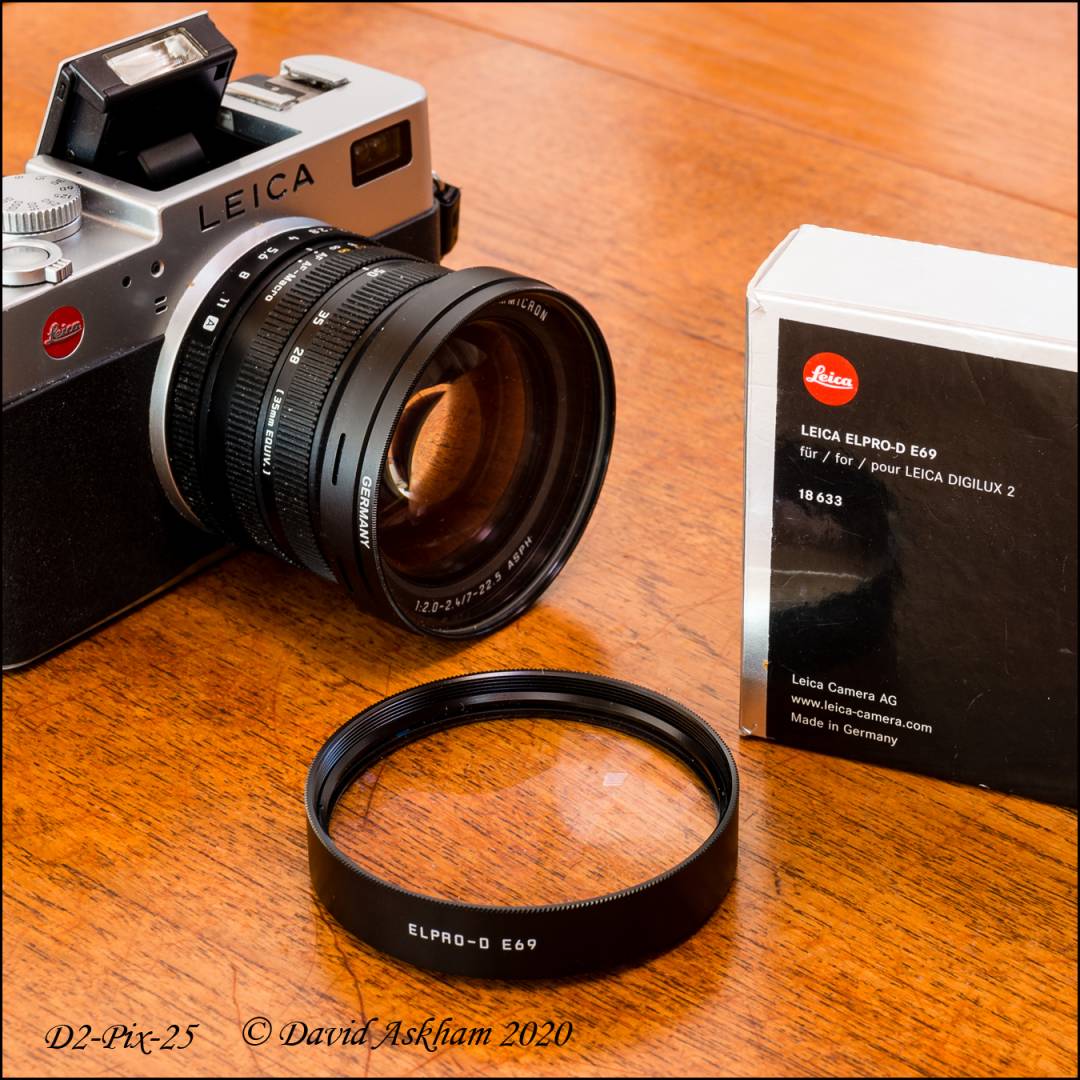

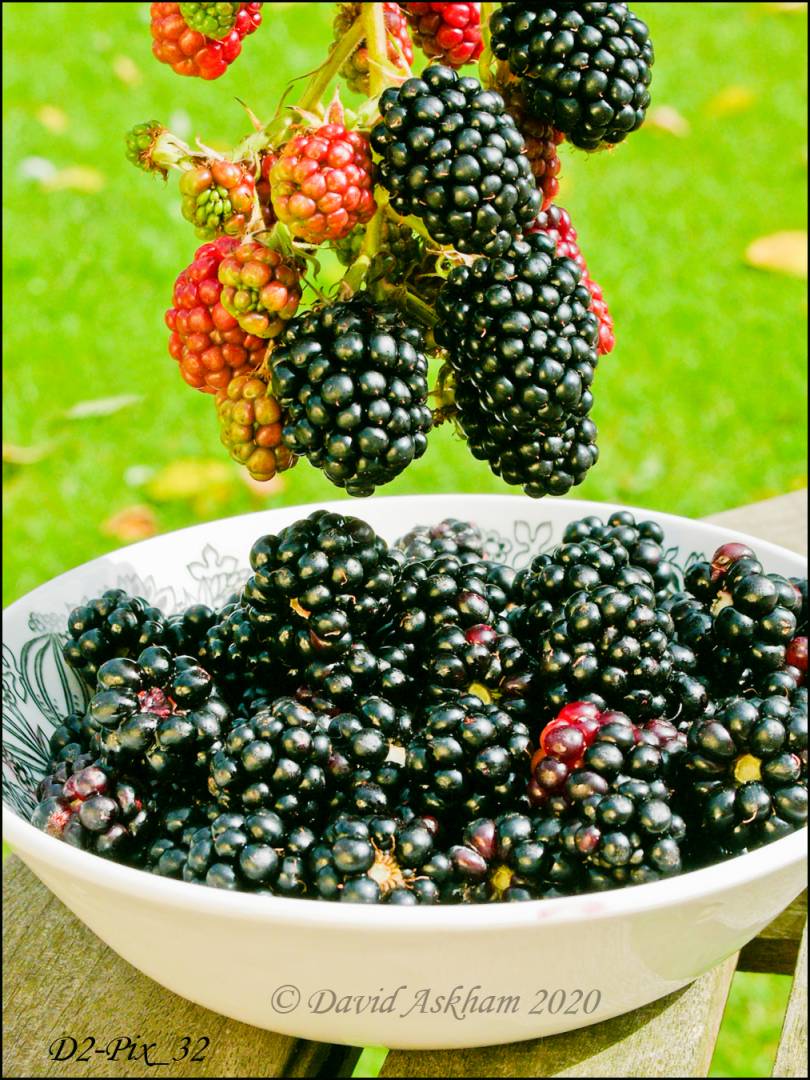

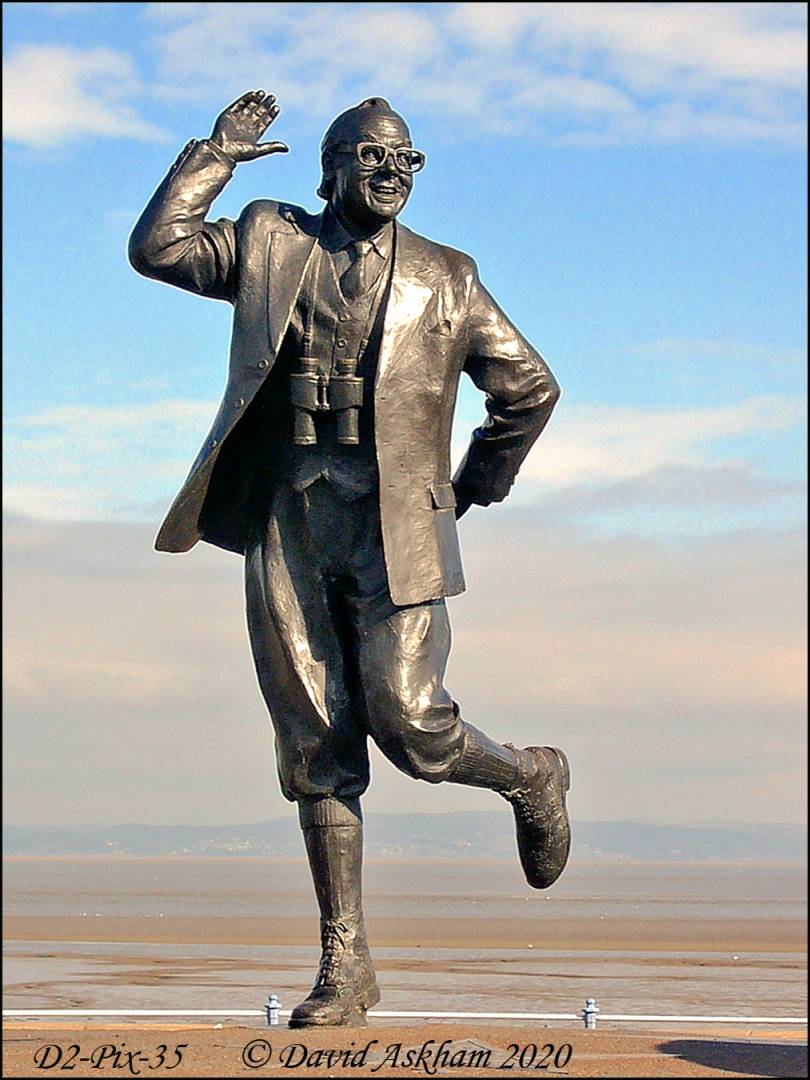
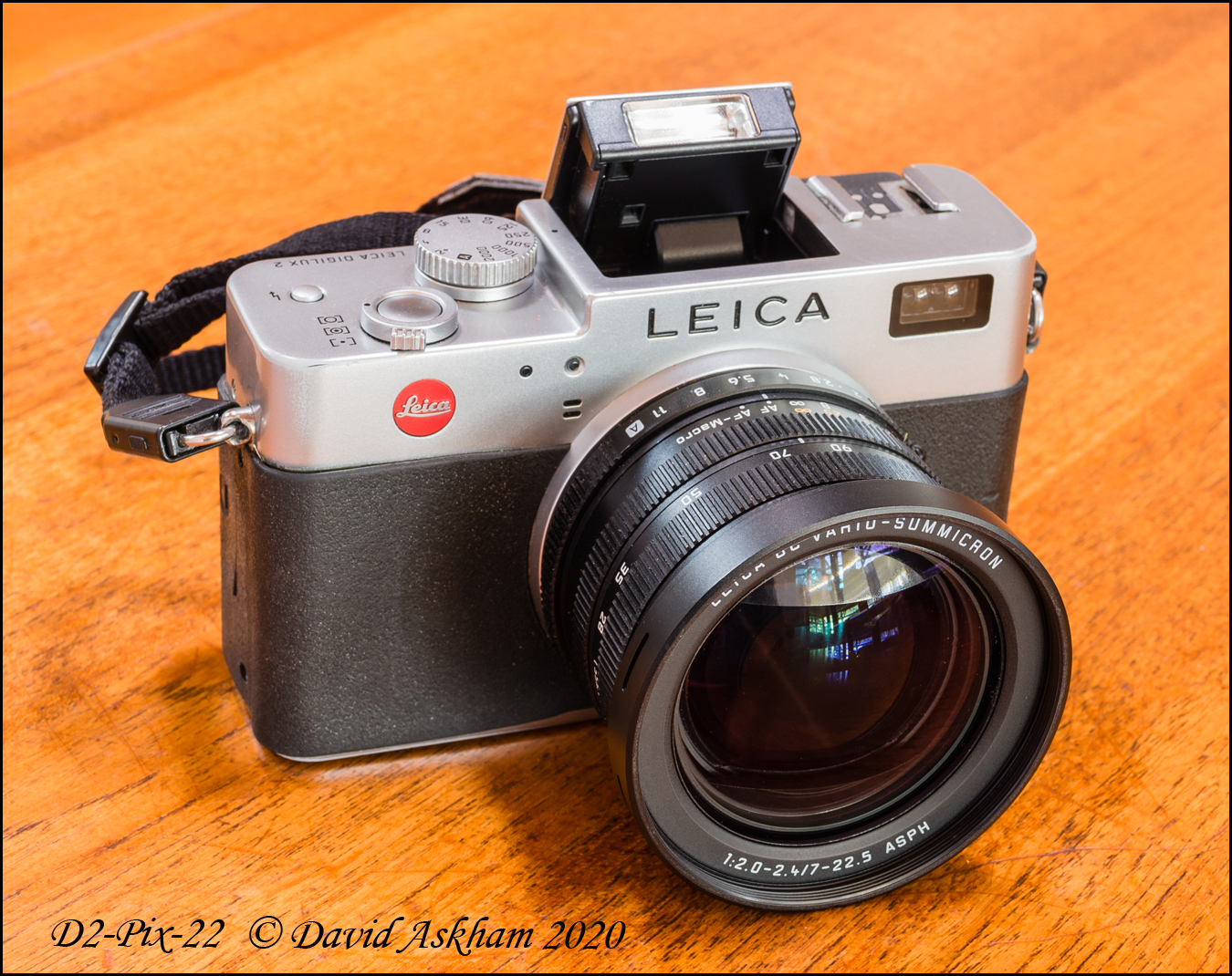
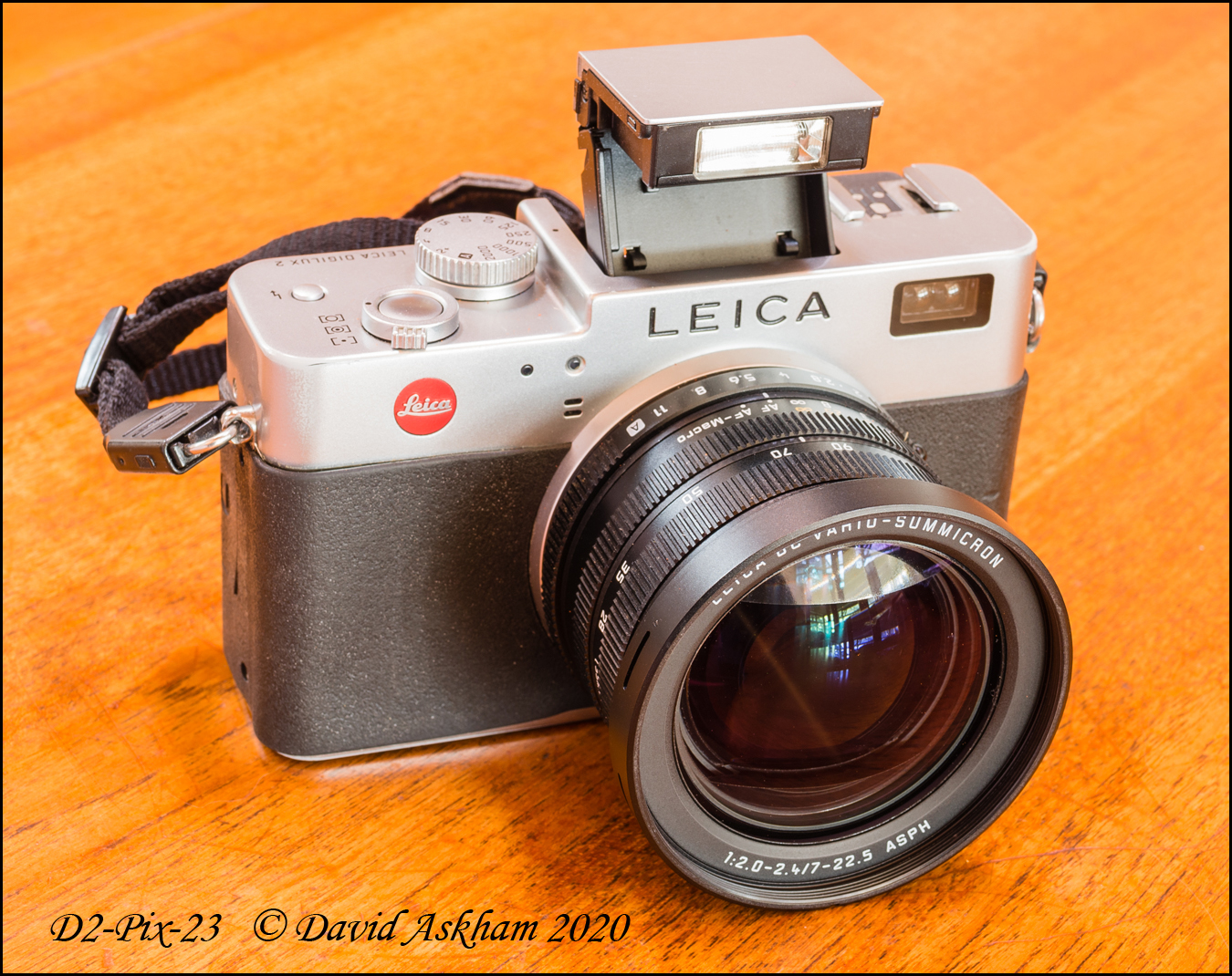
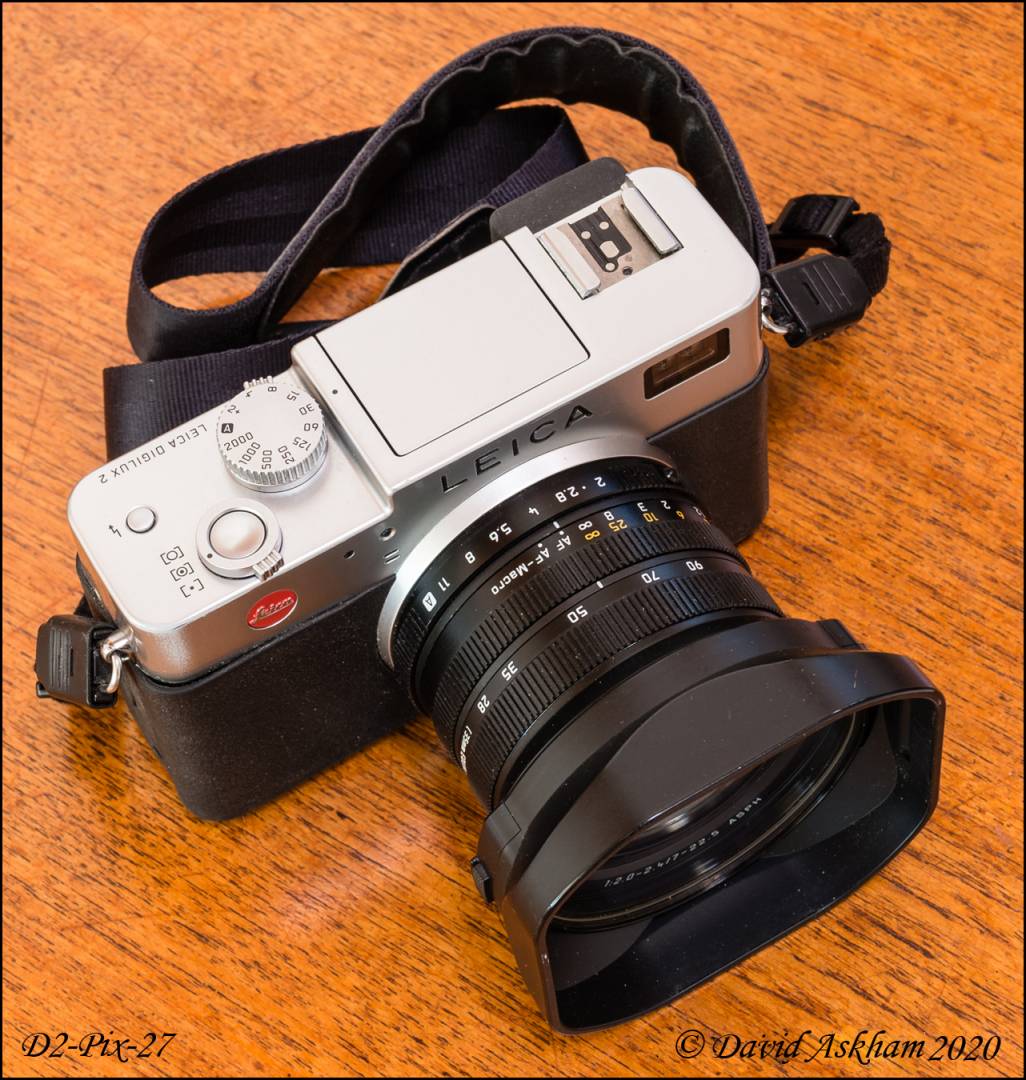
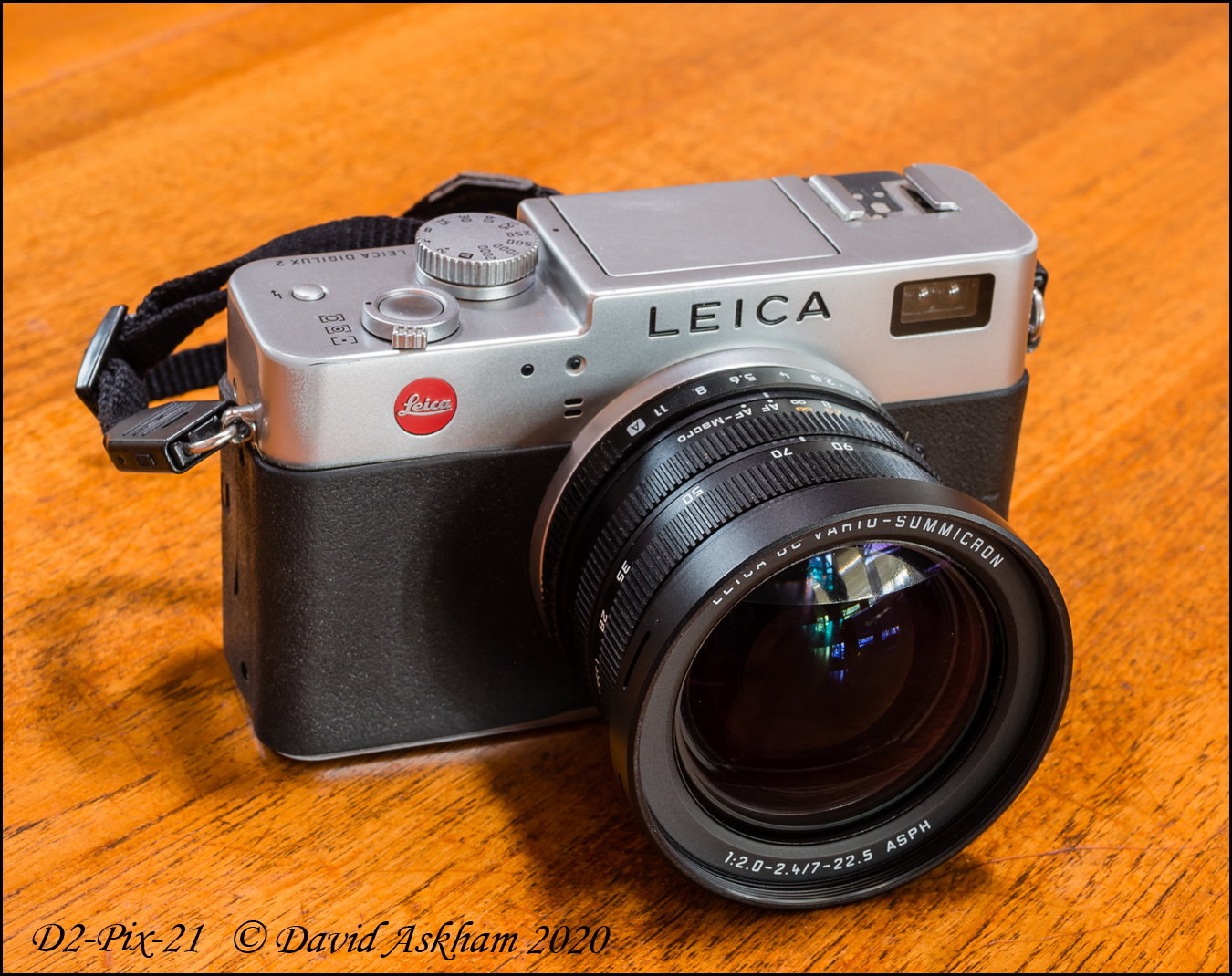
Really interesting article and comments, thank you for sharing. I have a small collection of older/unusual digital cameras Amongst which are 2 digilux 1’s which I still enjoy. My recently purchased digilux 2 is a little odd in that it doesn’t have a serial number but “sample 084” on the label.
I haven’t been able to find anything on various forums about such labelling and my assumption is that it may be a pre production item sent out for the purposes of review’s prior to the official launch.
Any thoughts on this would be appreciated.
There is something so very tactile about these early cameras which is missing from their modern counterparts.
Thanks again
Kevin
Thank you Kevin. Good to learn of your ownership and interest in early Leica digital cameras. Your question about identification numbers is interesting. When mine was new , its serial number was printed on a silver stick-on label affixed to the bottom plate. With the passing of time, mine is now unreadable. Only by referring to the original box can I be reminded of its serial number. It was a strange decision by Panasonic, who built the camera. The lens is wonderful and deserves a better body. It will remain part of history.
Just SO good to read a piece by a fellow enthusiast. And your pictures say it all. Mine will be coming out of hibernation soon. Perhaps I should say “my two D2s” because I also took out insurance against sensor failure. I just so much enjoy holding it/them and find the EVF fine for what the camera will do – which is a great deal more than one might expect! Actually I prefer the feel of the D2 to the X-Vario tho’ the latter is my “top” camera!
What a wonderful camera, and cast back to the early age of digital imaging. It’s hard to think about how good the pieces of equipment are that we carry today, or how much their forefathers sacrificed to make the R&D budgets of the big companies burn to make todays kit the things we love, but still complain about.
Ironically you turn up a picture of Eric Morcambe, as today Liz and I were discussing the Morecombe and Wise years of our childhood, and how my grandparents looked like them – we never told Gran.
Those images still hold up well today, which just goes to show that the omnipresent quest for greater pixel counts really doesn’t hold much sway. I still haven’t travelled past 16mp, well – except when I used the M10 for a few hours, but that seems like a lifetime ago.
Look after yourself in these curious of times.
Dave
Thank you Dave. In some ways we welcome our reduced commitments. We certainly have plenty to do. Look after Liz, and both take great care of yourselves.
Enjoyed your article, David, and your lovely images. Testament to your skills and help from Lightroom.
I adopted Aperture from its inception when it was more advanced than Lightroom but this didn’t last long so I switched to Lightroom and liked it a lot, particularly its DAM capabilities. However I ditched it several years ago when Adobe changed its business model to subscription. Ever since I have used Affinity Photo, a much superior editor but clearly no DAM at all. I am also now using Capture One Pro which I think is excellent on both counts. A long journey.
Re David B.s comments on iPhoto or Photos I agree it is a very competent editor up to a point and can very easily cope with many images pretty well. It has its limits though, like me!
Thanks again.
Since Lightroom 5 went down with the latest upgrade of OSX, I have switched to Luminar 2018 for my quick processing, and GIMP for my more complex work. However I miss Lightroom, it was an amazing bit if software. Sadly gazumped by the greedy cash gobbling Adobe accountants, who clearly aimed themselves at the professional end of things, without ever thinking about us amateurs who liked their products.
I think I paid around £80 for Lightroom 5, and it lasted me nearly five years or thereabouts at the point it was switched off. So around £16 a year, what a bargain and value for money. Adobe photoshop elements (whatever that is) is £100 in the Mac app store, and will probably not work after a year or two, and wont have half the functionality that I am used to, or need. And don’t get me started on monthly subscription services.
Dave, there is much to be said in favour of freezing the status of your computer to preserve a well-proven processing solution. I have a quality laptop I retain for processing Nikon scanner output. It was a standby machine, but no longer. That is a feasible solution for non-professional work. Its operating system is Windows XP, long beyond Microsoft support.
I agree the principle and can see what you would do it, but stopping my macbook from moving with OSX updates, might have left it lagging behind in some of the newer features that I have gained. And I did get Luminar as a gift, and then Aurora HDR as freebie, so it made sense to move with the times. I do miss Lightroom though, it was intuitively excellent – its just not worth a subscription.
Thank you , David!
Your Digilux 2 is a fine looking camera! And like most of the ccd sensors, I think the colours are fantastic in your shots. It’d be a fun camera to own, imo, whether badged Leica or Panasonic. Those two companies have quite a long collaborative history, now.
Regards from Australia, and stay healthy everyone.
Jason.
Thank you Jason. I agree with you that the colours compare very well with the results of more modern cameras.
Thanks David I really enjoyed the article ans super pictures though I never much liked my own Digilux 2 mostly if I remember correctly because i disliked the viewfinder whereas I truly loved the 2’s eventual replacement the Digilux 3, indeed I have had to seriously dissuade myself not to buy another several times since moving on further through the ever increasing pixel count to such as the X-Vario and CL etc.
So I am wondering. Did you too move on to a Digilux 3? and if so what did you think of it? Certainly for me it will always remain as a classic, as does the X-Vario the image quality from which still never fails to amaze me whereas when it comes to the CL maybe the less said the better.
Best regards and please keep healthy and well. Don
I moved on from a 2 to a 3 ..because the 3 takes interchangeable lenses! ..It was one of the first ‘Four-thirds’ cameras ..supported by both Panasonic (..who made the Digilux 3 ..and the 2, and the 1..) and Olympus.
There are a couple of lenses – or were, or have been – which make the 3 as versatile as the smaller follow-on ‘micro-four-thirds’ cameras.
I managed to find the (huge) wide-angle screw-on adaptor for the 2, which provides a 21mm equivalent view (..I seem to gravitate to wide angles..) but that does make it really heavy and cumbersome ..though the results – in bright light – look great.
But as the 2 goes up – as David said – to only ISO 400, it comes out only on bright days, and that’s just to run down its battery so I can charge it up again ..’exercising’ batteries keeps them healthy! (I’m still using my old Sony ‘Mavica’ to keep it healthy ..and don’t we need to keep healthy in these troublesome times?)
Oh – forgot to mention: the Search facility in iPhoto (..which I use to store and find, and – if necessary – tweak photos..) finds anything in an EXIF file, so it can search for camera type [Leica, Panasonic] or lens [e.g; Olympus 12-100] or white balance, or anything you like. And if your camera includes GPS info, or you’ve used iPhoto to store faces, then it’ll find anyone you’ve named, or where any photo was shot.
It’s an enormously capable ..and usually under-rated.. program!
Don, thank you. I found the primitive evf adequate for framing in bright light and positioning the focus point. However, it was way below what is available today.
I didn’t upgrade to D3, mainly because a gain of 2 mp was insufficient to justify it. As my eyes were set on the new M8, I did not need another system body.
The X-Vario was a better upgrade and, despite its obsolescence, is still in use daily. All of the product pictures in my article were taken in low ambient light indoors with the X-Vario camera.
May you and Jo emerge safe and healthy after our enforced sabatical.
Best Wishes
David A
I didn’t move on to a Digilux 3 either for two reasons:
1) I’ve never really liked changing lenses, so for me that’s not a plus.
2) It is a DSLR, i.e. has a flapping mirror. I’d forgotten this until to-day where I was on the brink of buying a mint D3 and then suddenly remembered and reigned in my cash !
So I’ll carry on enjoying the D2 – and for that matter the more “primitive” D1, which produces images which in my eyes have a sort of painterly quality.